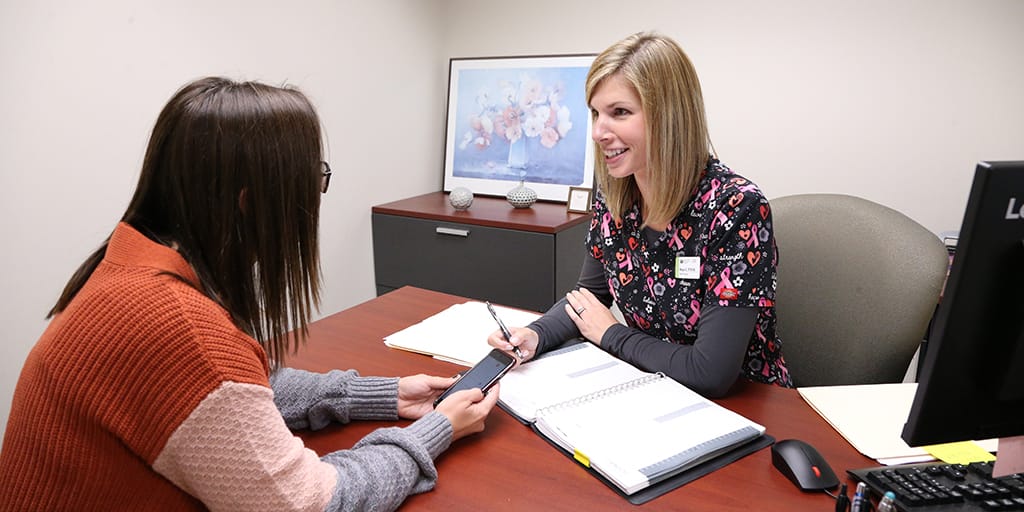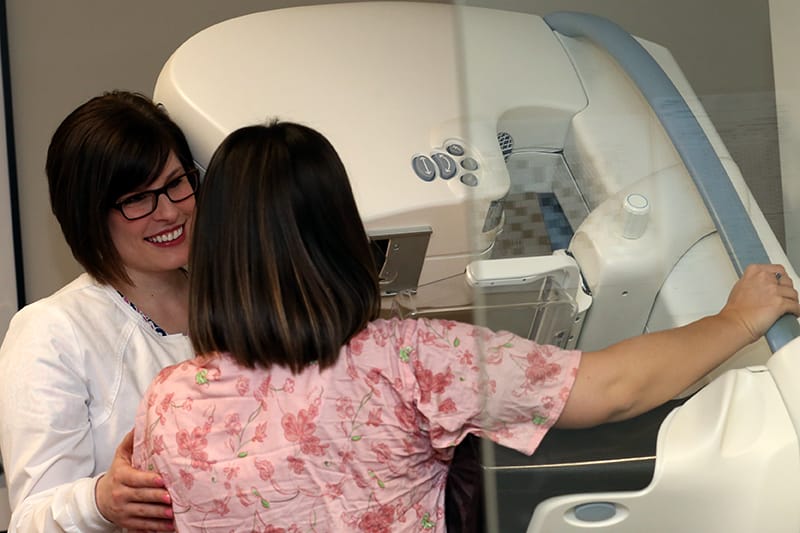What to Expect at Your Mammogram
A mammogram is one of the best tools to detect breast cancer early. Thousands of women’s lives are saved every year by this one routine test. With one in eight women likely to develop breast cancer at some point in their lifetime, it’s understandable to feel anxious about a screening that tells you if you’re one of them. Planning ahead and reminding yourself of the expectations will make you more comfortable before, during and after your mammogram.

When to Schedule Your Mammogram
Mammograms are recommended for all women who are 40 or older and have average risk of developing breast cancer. Your individual risk may call for a different schedule, so it’s important to check the latest breast cancer screening guidelines. You can determine if you are considered average risk by having a healthcare provider assess your individual risk factors. If you are under the age of 40, a physician referral may be necessary to schedule a mammogram.

Your Guide to Breast Health
From your first mammogram through every step of your breast imaging journey, you have one go-to person to coordinate your care and answer your questions.
Learn More
It’s also important to talk it over with your provider. Share any new problems or concerns you have with your breasts, like pain, discomfort, lumps, redness or any other noticeable differences. Fill your doctor in, provide an update on your medical history and get a clinical breast exam so your provider can check for any physical signs from the problems you discussed. This is an important step, as breast concerns may require more specialized evaluation with a diagnostic mammogram or ultrasound instead of a screening.
While a screening mammogram is just once a year, timing is everything. As a patient of The Iowa Clinic, you’ll get a letter one month before you’re due for your breast cancer screening. This gives you flexibility to find the best time to schedule your mammogram. For many women, that’s one week after their period. Sooner and your screening may be less comfortable, as breasts are more tender during the menstrual cycle. If you have a history of cysts that fluctuate with your cycle, that could be another consideration.
How to Prepare for a Mammogram
Once your appointment is on the calendar, you can start preparing for your visit to Medical Imaging. A little prep work helps ensure you have all the information you need and your appointment goes as quickly as possible.
If you’ve switched clinics, gather prior mammograms to provide to your new radiologist. The imaging from previous breast cancer screenings is helpful in spotting the changes and unique nature of your breasts, which can improve the accuracy of your exam.
To increase your comfort during the exam, consider cutting back on caffeine in the days leading up to your appointment. Caffeine is known to increase breast tenderness in some women. You could also take a non-steroidal anti-inflammatory drug like ibuprofen or naproxen to ease breast tenderness or pain.

What Happens at the Mammogram
An annual screening mammogram is one of the quickest medical appointments you’ll have. You’re in and out in just 15 minutes. Here’s what you can expect during your short visit.
Getting Ready for the Exam
After you check in, a technician will meet you in the waiting room and walk you back to the private dressing room where you can change into a gown.
You’ll be asked to wipe off any deodorant, lotions or powders near your breasts — these can affect the images taken during your exam.
A Thorough Medical History
Before your exam, you will be sent a request to fill out your medical and family history. Please fill it out as completely as you are able before you arrive. The technician will take you back to the exam room and briefly review your provided information. You’ll be asked about your first period, whether you’ve had children, if you’re taking hormones, whether you’ve had surgeries or biopsies and if you or your family has any history of cancer.
After your first mammogram, you’ll be asked fewer questions and will just need to verify that your health history is correct.
The Breast Exam
Your breasts will be compressed in the mammography machine while an x-ray rotates around them to take four images, capturing each side of both breasts. You’ll be asked to hold your breath so there’s no motion that affects the images.
The compression of your breasts may be uncomfortable for some patients, but it shouldn’t be painful. The imaging process takes only a few minutes, so any discomfort is over quickly. If you do feel pain, tell the technician right away.
Once the exam is done, you’re free to get dressed and be on your way.

When to Expect Your Mammogram Results
After the mammogram, a radiologist reads your exam results and compiles a report the same day. This report is sent to your primary care provider. For you, no news is good news! You’ll receive a letter with your full mammogram results in a matter of days.
About 10% of women get called back for additional imaging. This does not mean you have breast cancer. The goal of mammography is to look for any changes in your breast tissue. If it’s your first time, there is a little higher chance of a call back because the radiologist doesn't yet know what your normal breast tissue pattern looks like.
In most cases, a call back means the radiologist needs more or clearer imaging to provide more information on your breast tissue. They may need a better look at a dense or asymmetric area of tissue within your breasts. If follow-up testing is needed, you’ll get a call the next business day to schedule another appointment.
What Happens at a Diagnostic Mammogram
If you’re called back for more imaging — or referred because your primary care provider found something in a clinical breast exam — you’re actually scheduled for two back-to-back exams: a diagnostic mammogram and a breast ultrasound.
A diagnostic mammogram takes longer than a screening mammogram. More images are taken of your breast tissue so that the radiologist has the information necessary to make an accurate diagnosis. The whole exam takes about 30 minutes.
The radiologist checks the results of your diagnostic mammogram right away and will order the breast ultrasound, if needed. If additional imaging isn’t necessary, you’re free to go. If you need the breast ultrasound, it will take another 30 minutes, bringing your whole visit to an hour.
Either way, you get the results of your imaging before you leave the clinic.